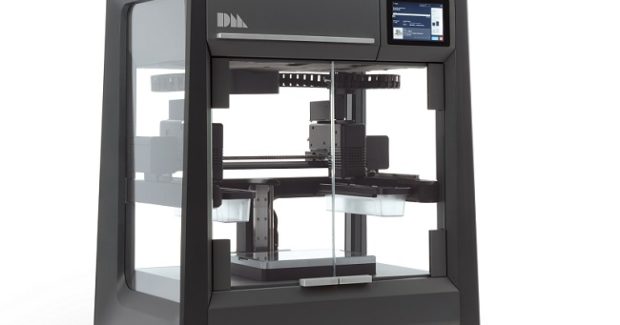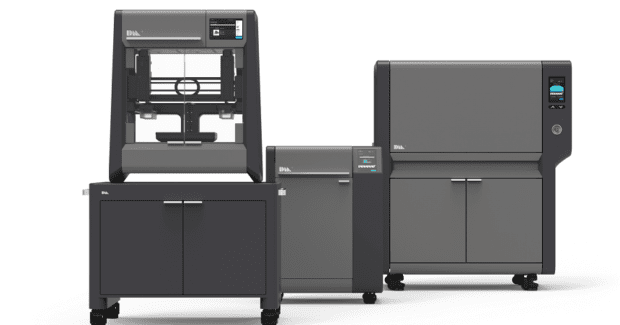Printing Parts for Extreme Temperature, Highly Corrosive, Marine-Grade Environments
Printing 316L stainless steel with the Studio System from Desktop Metal is another step to fundamentally changing the way metal parts are designed and manufactured for the most demanding applications.
Posted: July 1, 2019
A fully austenitic steel known for its corrosion resistance and excellent mechanical properties at extreme temperatures, 316L stainless steel is well-suited for the most demanding environments, including salt water in marine applications, caustic cleaners found in food processing environments, and chemicals in pharmaceutical manufacturing. Desktop Metal Inc. (Burlington, MA) now provides 316L for their office-friendly Studio System™ metal 3D printing system for prototyping and low volume production. “The addition of 316L enables engineers to print metal parts for a wide range of uses, including engine parts, laboratory equipment, pulp and paper manufacturing, medical devices, chemical and petrochemical processing, kitchen appliances, jewelry, and even cryogenic tools and equipment,” said Ric Fulop, the chief executive officer and co-founder of Desktop Metal. “Shops can now iterate quickly on 316L prototypes, print complex geometries that are not possible with most manufacturing methods, and produce end use parts cost-effectively. As more shops adopt metal 3D printing, helping to accelerate this growth by expanding the portfolio of desired materials is critical. Our materials science team is pushing the boundaries to print metal parts for a growing range of applications in as wide a material portfolio as possible.”
Applications of 316L parts printed with the Studio System confirm the diverse and promising results across multiple industries:
- Combustion fuel nozzle for marine tankers. The UHT Atomizer manufactured by John Zink Hamworthy Combustion (JZHC; Tulsa, OK) is a fuel oil atomizer for use with atomizing medium such as steam or air. It is typically installed in an HXG marine burner that is used on steam propulsion boilers on LNG tankers. The objective of the atomizer is to improve low load burner performance, allowing the burner to run on a lower fuel oil throughput to save operational costs when the vessel is maneuvering in port. 316L stainless steel is a key material for the part due to its excellent mechanical properties at high temperatures. Printed with the Studio System, the atomizer can be radically redesigned to function in a more fuel-efficient manner than those produced through traditional metalworking means. “Unlike many of the parts that we design and manufacture, this atomizer can only be fabricated utilizing additive manufacturing. Design constraints of casting, machining and other methods that bound our thinking can be eliminated as additive technology evolves and progresses,” said Paul Newman, the general manager at JGHZ UK.
- Customized ring splint for medical use. Ring splints, a common medical device typically made of injected molded plastic in standard sizes that often break after a relatively short lifetime, are designed to immobilize or limit the range of motion of injured limbs. Using traditional manufacturing methods, finger splints cannot be customized to improve fit. But by 3D printing in 316L, ring splints can be custom-printed on-demand to the desired size, with the added benefit of an aesthetic finish and increased durability. “Being able to 3D print medical-grade steel parts like this finger splint, which is customized to the patient anatomy, offers many advantages over previous fabrication methods that take longer and may have lower efficacy,” said Dr. Jim S. Wu, the chief of musculoskeletal radiology and intervention at Beth Israel Deaconess Medical Center and an associate professor at Harvard Medical School.
- Impeller for harsh environments. Commonly used across a variety of industries, impellers are an essential component of pumps used to move fluid through systems. They require complex vanes to optimize pressures in the pump for different fluids and applications. With chemical impellers, 316L is the choice material for its chemical resistance and mechanical properties at extreme temperatures, such as those found in cryogenic, salt water, and petroleum pumps. These impellers are geometrically complex, with prototypes typically costing $1,000 or more. Using the Studio System, an impeller was printed in 316L for $70. “The oil and gas industry will be a major beneficiary of advances in metal 3D printing,” noted Ahmad Khowaiter, the chief technology officer of Saudi Aramco (Dahran, Saudi Arabia). “We look forward to advancing next-generation applications where additive manufacturing can leapfrog existing manufacturing methods.”
As 316L joins 17-4 PH stainless steel in the Studio System materials library, Desktop Metal has more than 30 materials in development, with plans to introduce additional core metals, including tool steels, superalloys, and copper.
Desktop Metal, Inc., 63 Third Avenue, Burlington, MA 01803, 978-224-1244, www.desktopmetal.com.
















